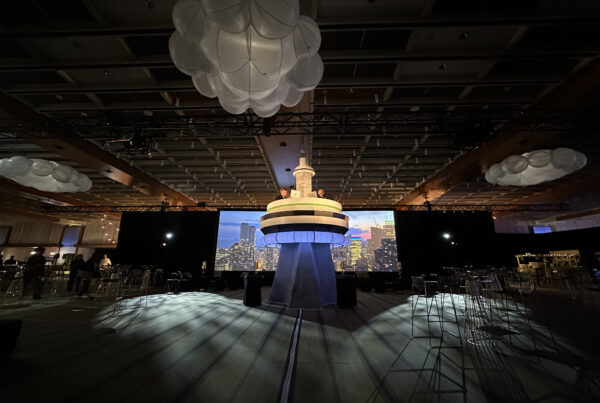Did you know that a five-day congress of approximately 2,500 participants wastes 62,500 plates, 87,500 disposable napkins, 75,000 cups and 90,000 cans or water bottles? The good news is that the excessive costs that we tend to associate with an eco-friendly event are just a myth. In fact, “green” events are quite friendly to the “green” in your wallet! Here are some simple tips and tricks to make your event a little kinder to Mother Nature.
Limit Waste
As mentioned above, an event generates a lot of waste. Fortunately, all it takes is some small steps to drastically reduce what’s tossed in the garbage. For example, Meeting Strategy Worldwide replaced its plastic water bottles with reusable ones and installed several water stations in strategic spots. The result? They saved more than $15,000 in a year. Want to cut costs even more? Encourage attendees to bring their own cups or reusable bottles.
Another solution is to minimize paper use. With today’s technology, there are many options to help you pull this one off. How about creating a mobile app that can handle scheduling, speaker bios, directions to get to the venue, and much more? You’ll even be able to reuse and adapt your app to each of your events. If a mobile app seems too complicated or costly, another option is creating a hashtag on Twitter where your attendees can access all the essential information on your event.
Finally, when it comes to food, use reusable or acrylic dishware. For centerpieces, make sure your choice is recyclable or can be donated, planted or eaten. This way, the centerpieces will get a second life instead of being buried in a garbage can. Budget permitting, we recommend selecting organic ingredients or to take advantage of current trends such as “Meat-less Mondays” to fight against the effects of factory farming or pesticides.
Reduce Your Ecological Footprint
When assembling such a large group of people in a single place, a significant ecological footprint is inevitable, but limiting the problem is still possible. It all starts with your choice of venue. Pick a building with an eco-certification (LEED, LEAF, etc.), which already offers several strategies in-house to reduce energy and water.
Moreover, book a space with accessible public transportation or provide your guests with a shuttle, thereby limiting greenhouse gas emissions generated when transporting attendees to the venue. Otherwise, suggest carpooling. Also, do pick local suppliers, which will reduce transportation-related pollution while encouraging neighbourhood businesses.
For more advice, tools and resources to help your organization, visit the site MeetGreen or consult the Guide des réunions écologiques, published by Environment Canada, which offers tips and lists for planning an eco-friendly event.
Source of introductory paragraph.





